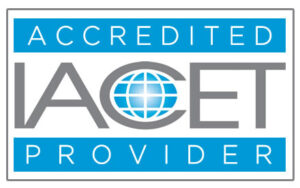32-Hour Supported Scaffold Installer & Remover.
Description:
The 32-Hour Supported Scaffold Installer/Remover (SCA-102) course is a comprehensive training program designed to provide participants with the knowledge and skills necessary to safely install and remove supported scaffolds in the construction industry. This course focuses specifically on the responsibilities and techniques involved in the installation and removal of supported scaffolding systems.
During the course, participants will learn about the different types of supported scaffolds, their components, and their applications. They will gain an understanding of the importance of proper scaffold assembly, inspection, and dismantling to ensure stability and prevent accidents.
The training will cover topics such as scaffold safety regulations, hazard identification, fall protection, proper assembly techniques, securing methods, rigging procedures, platform requirements, and load capacities. Participants will also learn about communication, coordination, and safe work practices when installing or removing supported scaffolds.
Through a combination of informative presentations, discussions, demonstrations, and hands-on activities, participants will develop the skills to install and remove supported scaffolds safely. The course will emphasize practical techniques, industry best practices, and compliance with relevant safety standards and regulations.
The 32-Hour Supported Scaffold Installer/Remover course is suitable for construction workers, supervisors, and individuals involved in the installation and removal of supported scaffolds in their work. It is particularly beneficial for scaffold installers, scaffold erectors, and those responsible for coordinating and overseeing scaffold installations and removals.
Language: English and Spanish.
Duration: 32 Hours
Course Code: SCA-102
Delivery Requirements:
Hands-On: the instruction must be delivered onsite and in person. The students must physically handle the items. The procedure being instructed must be demonstrated and explained to the students first.
Demonstration: the demonstration may be delivered either by a person or a video. Video Demonstrations may be delivered by virtual live classroom, however, self-study modules are not permissible.
Classroom Lecture/ Discussion w A/V: the instruction may be delivered by virtual live classroom; however, self-study modules are not permissible.
Learning Objectives:
- Understanding Supported Scaffolds: Participants will gain a comprehensive understanding of different types of supported scaffolds, their components, and their applications in the construction industry.
- Scaffold Safety Regulations and Standards: Learners will familiarize themselves with relevant scaffold safety regulations, standards, and guidelines, including OSHA requirements, ensuring compliance and promoting a safe work environment.
- Hazard Recognition and Risk Assessment: Participants will develop the skills to identify potential hazards associated with supported scaffolds during installation and removal and assess risks to implement appropriate control measures.
- Scaffold Assembly and Dismantling Procedures: The course aims to educate participants on proper procedures for scaffold assembly, including selecting components, erecting scaffolds safely, and dismantling scaffolds efficiently and safely.
- Fall Protection Measures: Learners will understand and implement fall protection measures specific to supported scaffold installation and removal, including the use of personal fall arrest systems (PFAS), harnesses, lifelines, and proper tie-off techniques.
- Rigging Techniques and Load Capacities: Participants will learn proper rigging techniques, including the selection and attachment of rigging equipment, determining load capacities, and securing scaffolds for safe installation and removal.
- Platform Requirements and Stability: The course will cover platform requirements for supported scaffolds, including proper placement, securing, and ensuring a stable working surface during installation and removal.
- Communication and Coordination: Participants will understand the importance of effective communication and coordination among workers involved in supported scaffold installation and removal, ensuring safe and efficient work practices.
- Safe Work Practices: The course emphasizes safe work practices during supported scaffold installation and removal, including material handling, equipment usage, and maintaining a clean and organized work area.
Requirements
- There are no prerequisites needed to attend this course.
- As per NYC Local Law 52 of 2005, this course is required for workers installing, removing or modifying supported scaffolds over 40 feet on Construction Sites in New York City.
Features
- CEUs: 3.2
- CEU Requirements: 100% attendance for the course.
- Completion of IACET Registration Form
- Active participation in all class exercises
- As applicable, achievement of minimum passing score on required end-of-course examination
- Participation and submittal of end-of-course evaluation form
Target audiences
- Experienced workers who will erect, dismantle modify or repair supported scaffolds over 40 feet, safety managers, construction superintendents and individuals who just want to learn more about supported scaffold safety

